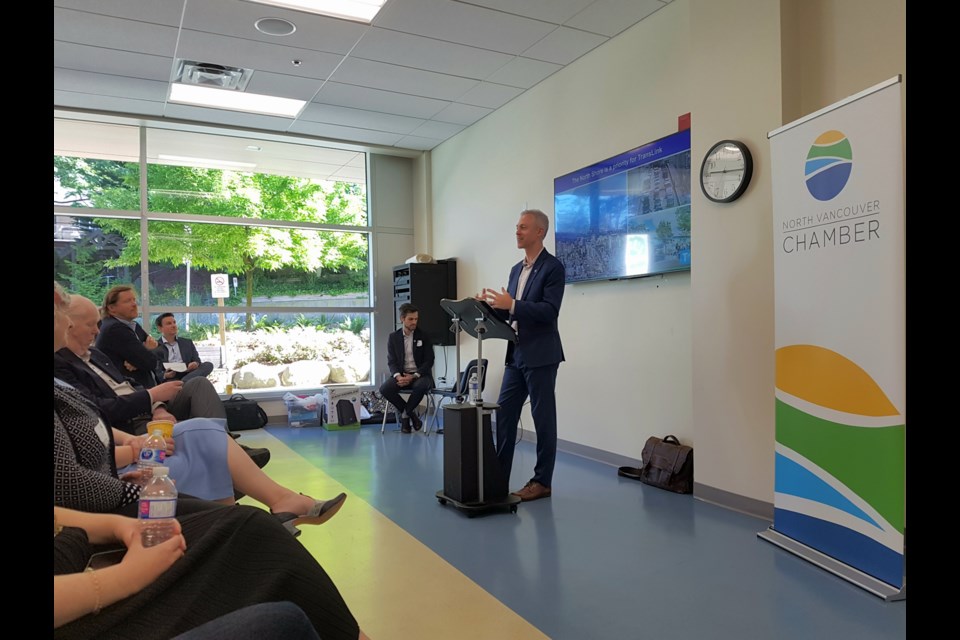While getting more people to the North Shore is a regional priority in the short term, allocating the dedicated road space to do so effectively will require tough conversations, according to the head of Southern B.C.’s statutory transit authority.
On Tuesday (June 7), TransLink CEO Kevin Quinn spoke to a small crowd at a talk organized by North Vancouver Chamber, where he stressed the urgency for concrete solutions to provide relief to multiple crises.
At the top of that list is a bus rapid transit (BRT) line that would connect Metrotown in Burnaby to Park Royal in West Vancouver. The project is part of TransLink’s 10-year priorities – a subset of its Transport 2050 plan – which debuted at the Mayors’ Council on Regional Transportation in April.
Of nine BRT lines put forth in the plan, the Metrotown-Park Royal route is the only one listed for “immediate” planning and design. In April, rollout of that route was slated for the second half of the 10-year plan, but on Tuesday Quinn said the projected timeline is for the next three to five years.
“I want to convey that we're moving with some urgency and really the key theme that came out of our Transport 2050 engagement was we need solutions now,” he said. “We have a climate crisis now. We have an affordability problem now. And we can't wait another 10 to 20 years for huge infrastructure projects.”
'How do we move the most people?' not 'How do we move the most cars?'
Included in the 2050 outlook are solutions like expanding SkyTrain to the North Shore. But rail rapid transit costs around $400 million per kilometre, TransLink says, and requires significant build time. Comparatively, BRT costs around $15 million per kilometre, and only needs relatively quick infrastructure changes.
Quinn emphasized that really good transportation can help alleviate many of the problems to people living in or accessing the North Shore. But changes in thinking are required.
“We need to ask ourselves: ‘How do we move the most people through a corridor?’ and not: ‘How do we move the most cars through a corridor?’”
One person at Tuesday’s talk noted that North Van is particularly dense, and streets in the area aren’t built for BRT. It’s already bottlenecked and congested. Will TransLink build more roads?
“These are the big kind of messy questions we need to get into,” Quinn replied. “And go block by block, neighbourhood by neighbourhood, and have these conversations with folks to say, ‘You want rapid transit? There are trade-offs.’”
When building rapid transit options fast, there isn’t the time to build a decade’s worth of new infrastructure, the CEO said. “There are going to be some hard conversations.”
BRT shouldn’t be confused with the rapid bus service currently serving the North Shore. BRT involves aspects like dedicated lanes, traffic signal priority and modern stations with elevated boarding platforms.
TransLink’s 10-year priorities will be given to the mayors’ council for final approval in the coming weeks, Quinn said. Light rail transit – a popular option for some, but much more costly than BRT – isn't being prioritized.




